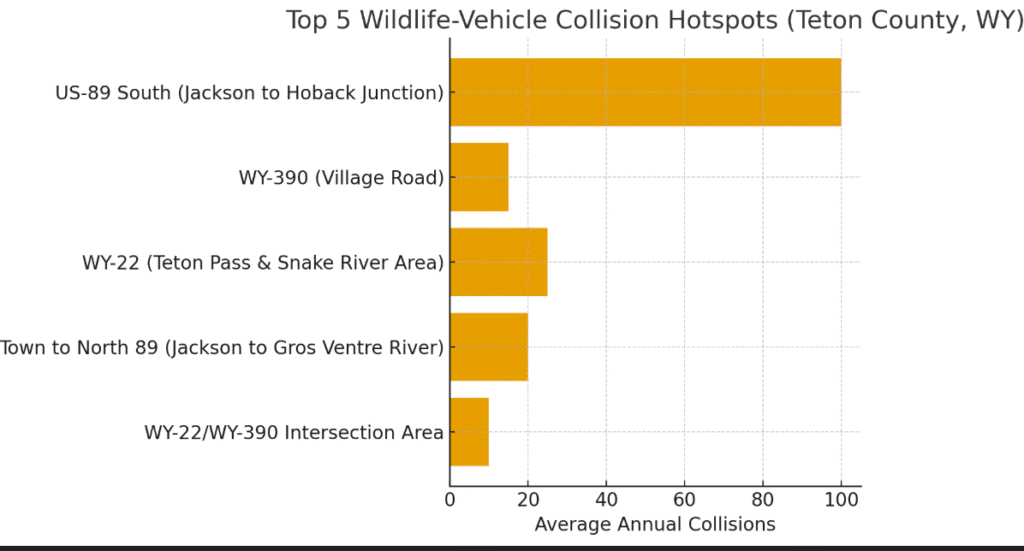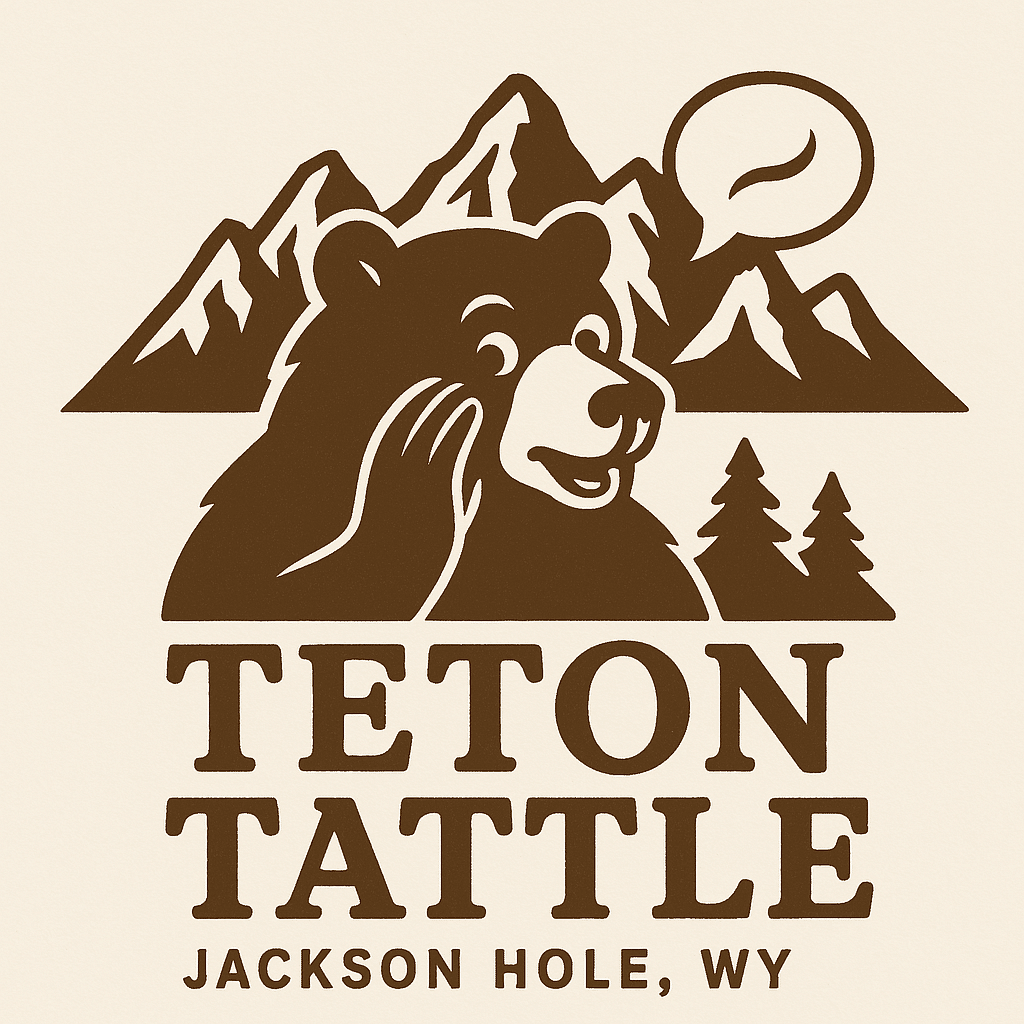JACKSON, WY — The Jackson Hole Wildlife Foundation (JHWF) is urging drivers to slow down and stay alert after a troubling streak of five moose deaths in five months along a one-mile stretch of WY-390, the Village Road. While this area has long been a hotspot for wildlife-vehicle collisions, this year’s losses underscore how dangerous local highways can be for both animals and motorists.
On average, 3.5 moose-vehicle collisions have been reported annually on this highway over the past 10 years. So we are trending way too high for 2025!
A Decade of Data: Where and When Wildlife Get Hit
The report identifies several major collision corridors in Teton County:
- South Highway 89 (Jackson to Hoback Junction) — accounts for nearly half of all mule deer collisions (68 out of 156 in 2023)
- WY-22 near West Gros Ventre Butte and the Snake River — persistent moose and elk hotspots.
- WY-390 (Village Road) — dense development and side roads make wildlife mitigation extremely difficult.
Seasonally, the worst months for animal strikes are October, March, and July, according to long-term data. In the 2023 study year, mule deer made up 67% of all reported crashes, elk 16%, and moose just 7%, though each moose collision carries major risk due to their size.

Crossings Help — But Only So Far
Thanks to a mix of wildlife underpasses and funnel fencing installed along South Highway 89 and the Snake River Bridge project at WY-22/390, some improvements are visible. JHWF’s report suggests the new crossings have already reduced mule deer collisions by roughly 40% compared to severe winters like 2017.
However, “just north of the newly built project, dense development and access roads on WY-390 make it challenging to create effective mitigation solutions,” said Renee Seidler, Executive Director of JHWF. In other words, concrete helps, but common sense behind the wheel helps more.
⚠️ Tips from the Wildlife Foundation
- Slow down — especially at night, dawn, or dusk; drop your speed by 10+ mph in poor conditions.
- Stay alert — scan both sides of the road, particularly near creeks and drainages.
- No phones, no distractions — driving through moose country is not multitasking territory.
- Use hazards when you spot wildlife to warn other drivers.
- Assume the herd — when one animal crosses, expect others to follow.
Explore the Collision Maps
The full JHWF report includes detailed heat maps of elk, moose, and mule deer collisions across Teton County, WY and Teton County, ID, pinpointing the most dangerous stretches of highway.
📄 Full Report (PDF): Jackson Hole Wildlife Foundation 2022–2023 WVC Summary Report
Bottom line: Slowing down by just 10 mph could be the difference between spotting a moose and totaling your Subaru. The wildlife crossings are helping, but until every stretch of highway has one, it’s on all of us to drive like we actually live in the middle of a wildlife refuge — because we do.
| Highway / Segment | Primary Species Impacted | 10-Year Avg Collisions / Year | Notable Incidents |
|---|---|---|---|
| US-89 South (Jackson to Hoback Junction) | Mule Deer, Elk | 100 | 68 Mule Deer collisions; 44% of county total |
| WY-390 (Village Road) | Moose | 15 | 5 Moose killed in 5 months (2024 trend) |
| WY-22 (Teton Pass & Snake River Area) | Moose, Elk | 25 | 3 Moose WVCs; hotspot near Snake River |
| Town to North 89 (Jackson to Gros Ventre River) | Elk, Mule Deer | 20 | Elk spikes near Gros Ventre Butte |
| WY-22/WY-390 Intersection Area | Moose, Mule Deer | 10 | Active construction; increased congestion |
AntlersArch founder and the voice behind Teton Tattle.





